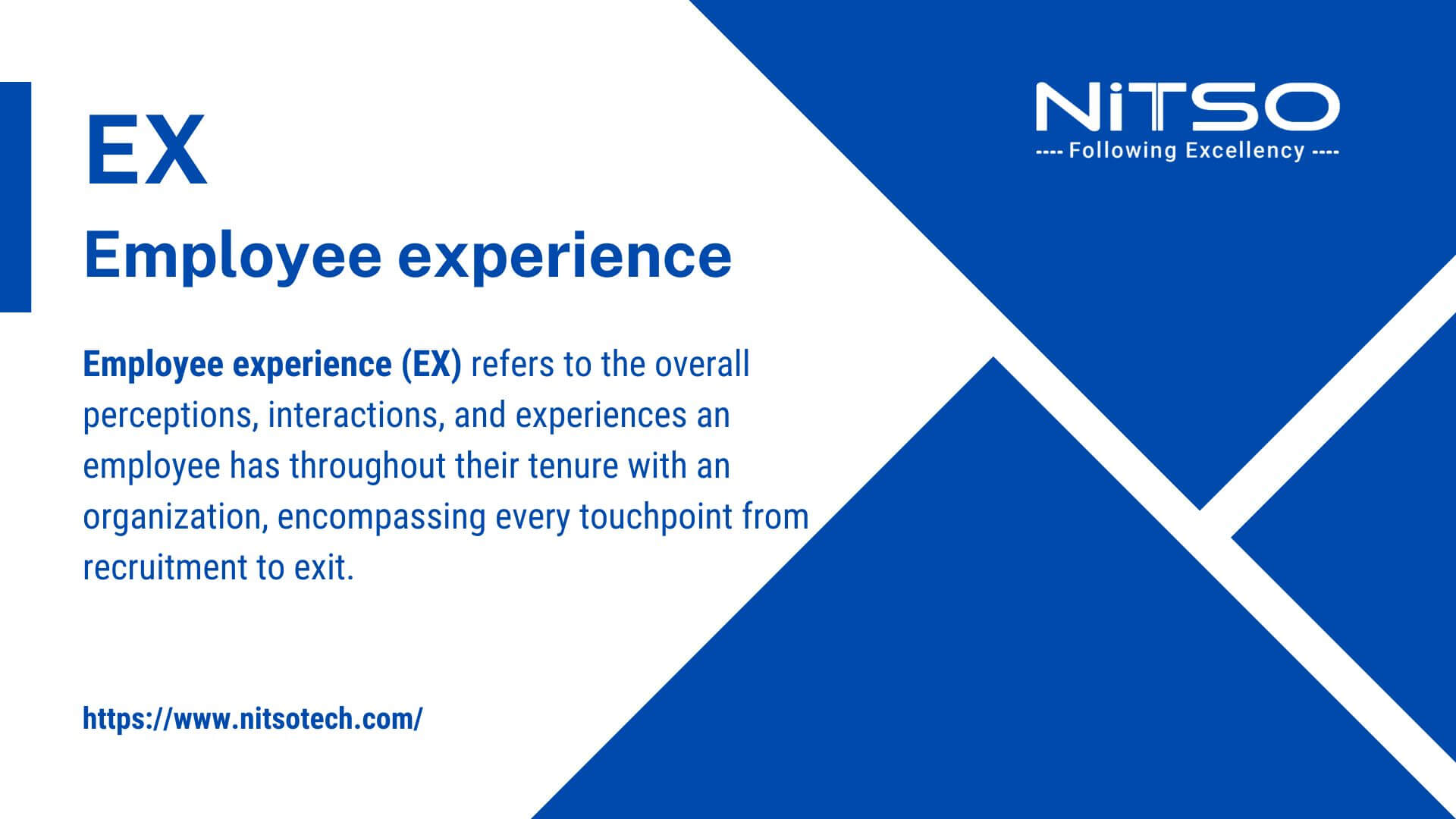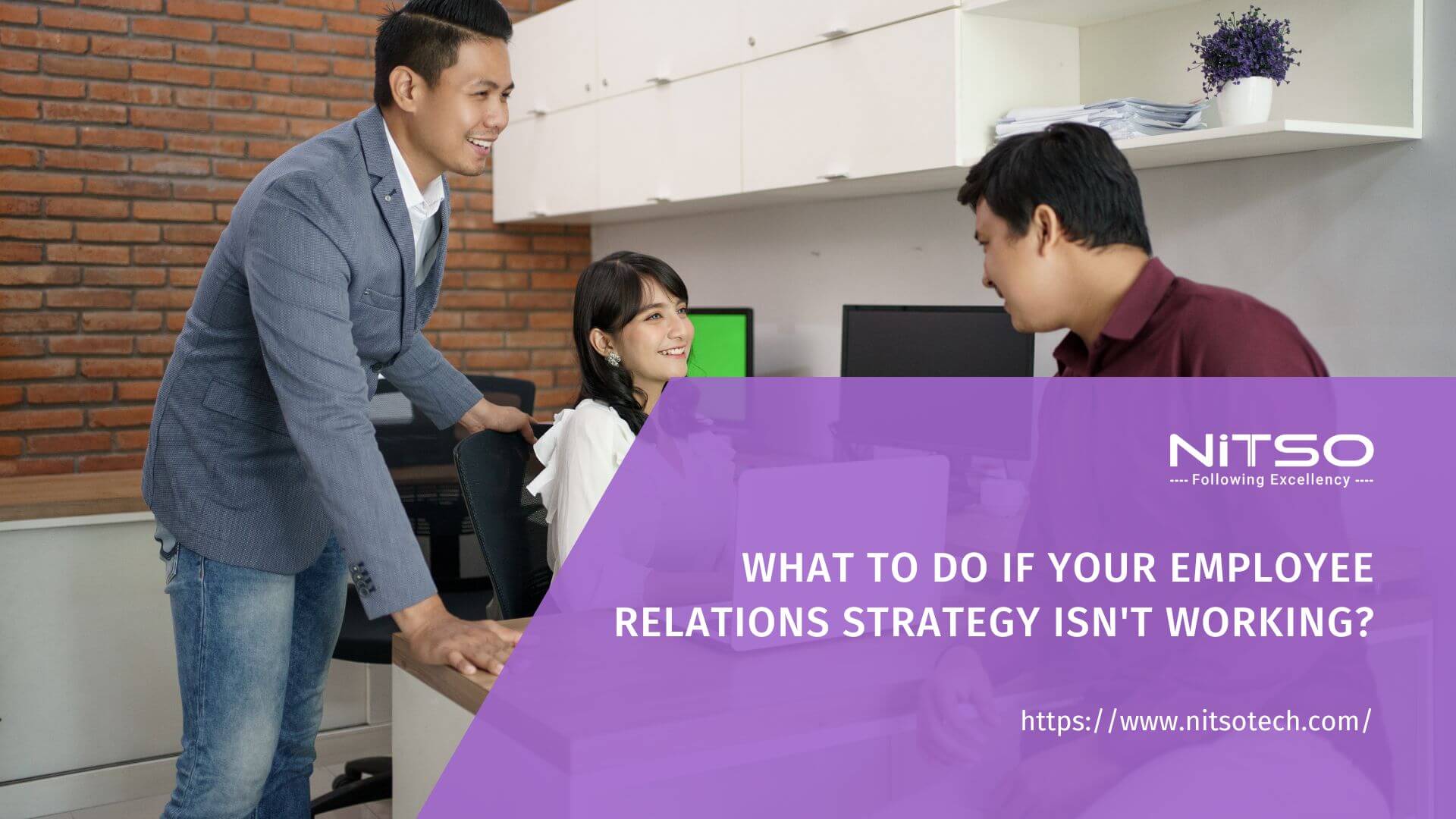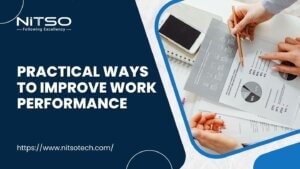In today’s highly competitive business landscape, retaining top talent has become a paramount challenge for organizations across industries. With employees increasingly prioritizing their well-being, growth opportunities, and work-life balance, companies must adapt to meet these evolving needs. According to a study by Gallup, companies with highly engaged employees outperform their peers by 21% in profitability.
The key to fostering a motivated and loyal workforce lies in creating a positive employee experience. This comprehensive approach encompasses every aspect of an employee’s journey within the organization, from recruitment to offboarding. By focusing on the employee experience, companies can not only attract and retain top talent but also drive productivity, innovation, and business growth.
This comprehensive guide explores 10 Easy Ways to Improve Employee Experience, providing actionable insights and practical strategies that organizations in India can implement to create a thriving, engaging, and supportive work environment for their employees.
Content On This Page
10 Simple Ways to Boost Employee Experience
1. Foster Open Communication
Effective communication is the cornerstone of a positive employee experience. By establishing open, transparent, and two-way communication channels, organizations can create an environment of trust, collaboration, and shared understanding. When employees feel heard and valued, they are more likely to be engaged, motivated, and committed to the company’s success.
- Encourage Feedback and Suggestions: Implement mechanisms that allow employees to provide candid feedback and suggestions without fear of repercussions. This could include anonymous surveys, town hall meetings, or dedicated feedback channels. By actively seeking and acting upon employee input, companies demonstrate their commitment to continuous improvement and employee empowerment.
- Implement Two-Way Communication Channels: Promote open dialogue between management and employees through regular check-ins, team meetings, and one-on-one conversations. Ensure that communication flows in both directions, allowing employees to voice their concerns, ideas, and perspectives, while also receiving updates, guidance, and support from leadership.
- Address Concerns Promptly: When employees raise concerns or report issues, it is crucial to address them promptly and transparently. Establish clear protocols for escalating and resolving complaints, and provide regular updates to maintain trust and demonstrate that employee well-being is a priority.
By fostering open communication, organizations can build a collaborative, inclusive, and supportive work environment where employees feel valued, respected, and empowered to contribute to the company’s success. This not only enhances the employee experience but also drives innovation, problem-solving, and overall organizational effectiveness.
2. Promote Work-Life Balance
In today’s fast-paced and demanding work environments, striking a healthy work-life balance is crucial for employee well-being, productivity, and overall job satisfaction. By implementing policies and initiatives that support a balanced lifestyle, organizations can create a positive employee experience that fosters long-term engagement and employee retention.
- Flexible Work Arrangements: Offer flexible work options such as remote work, flexible schedules, or compressed workweeks. This approach acknowledges the diverse needs and responsibilities of employees, enabling them to better manage their professional and personal lives. Providing this flexibility demonstrates trust and respect for employees’ time and autonomy.
- Paid Time Off and Vacation Policies: Encourage employees to take advantage of paid time off and vacation days to recharge and rejuvenate. Clearly communicate these policies and create a culture that supports their utilization without fear of repercussions or stigma. Rested and refreshed employees are more productive, engaged, and better equipped to handle workplace challenges.
- Employee Assistance Programs: Implement comprehensive employee assistance programs that provide resources and support for various aspects of life, such as counselling services, financial planning, legal assistance, or access to wellness programs. These programs demonstrate the company’s commitment to holistic employee well-being and can help employees better manage stress and personal challenges.
By promoting a healthy work-life balance, organizations can cultivate a supportive, empathetic, and understanding work environment. Employees who feel valued and supported in their personal lives are more likely to experience increased job satisfaction, improved mental health, and a stronger commitment to their employer. This, in turn, translates into a more engaged, productive, and loyal workforce, benefiting both the employees and the organization.
3. Provide Growth Opportunities
Providing employees with opportunities for personal and professional growth is a crucial aspect of fostering a positive employee experience. When individuals feel stagnant or lack a clear path to advancement, their motivation and engagement levels can decline, leading to dissatisfaction and potentially seeking opportunities elsewhere.
- Training and Development Programs: Invest in comprehensive training and development programs that equip employees with the skills and knowledge necessary to succeed in their roles and advance their careers. These programs can include on-the-job training, workshops, online courses, or mentorship opportunities. By continuously developing their capabilities, employees feel valued and supported in their professional growth.
- Mentorship and Coaching Initiatives: Implement mentorship and coaching programs that pair experienced professionals with those seeking guidance and support. These initiatives foster knowledge sharing, skill development, and a culture of continuous learning. Mentors can provide valuable insights, feedback, and guidance, helping mentees navigate their career paths and overcome challenges.
- Clear Career Progression Paths: Establish well-defined career paths and progression opportunities within the organization. Clearly communicate these paths and the requirements for advancement, ensuring that employees understand the steps they need to take to reach their desired roles or positions. Regular performance reviews and feedback sessions can help employees track their progress and identify areas for improvement.
By providing employees with growth opportunities, organizations demonstrate their commitment to nurturing talent and investing in their workforce. Employees who feel supported in their professional development are more likely to experience increased job satisfaction, enhanced engagement, and a stronger sense of loyalty to the company. This, in turn, can lead to improved retention rates, a more skilled workforce, and a competitive advantage in attracting top talent.
4. Recognize and Reward Accomplishments
Employees thrive when their efforts and contributions are acknowledged and celebrated. Implementing effective recognition and reward programs can significantly enhance the employee experience by fostering a sense of appreciation, motivation, and a desire to excel.
- Employee Recognition Programs: Establish formal recognition programs that acknowledge and celebrate employee achievements, milestones, and outstanding performance. These programs can take various forms, such as peer-to-peer recognition, manager-driven awards, or company-wide celebrations. Ensure that recognition is timely, specific, and aligned with the company’s values and goals.
- Performance-Based Incentives: Implement performance-based incentive programs that reward employees for meeting or exceeding predetermined goals and objectives. These incentives can include bonuses, profit-sharing, or other forms of compensation tied to individual or team performance. Clearly communicate the criteria and expectations for earning these incentives to maintain transparency and fairness.
- Celebrate Milestones and Successes: Foster a culture of celebration by acknowledging and commemorating significant milestones and successes within the organization. This could include celebrating project completions, reaching sales targets, or achieving company-wide goals. These celebrations not only recognize the hard work and dedication of employees but also reinforce a sense of unity and shared accomplishment.
By recognizing and rewarding accomplishments, organizations demonstrate their appreciation for employees’ efforts and contributions. This approach can lead to increased motivation, improved morale, and a stronger sense of pride and belonging among the workforce. Employees who feel valued and appreciated are more likely to remain engaged, productive, and loyal to the company, ultimately contributing to a positive employee experience and overall organizational success.
5. Cultivate a Positive Work Culture
A company’s work culture plays a pivotal role in shaping the employee experience. A positive and inclusive work environment fosters a sense of belonging, collaboration, and shared purpose, ultimately driving employee engagement and productivity.
- Promote Inclusivity and Diversity: Embrace and celebrate diversity within the workplace by implementing policies and initiatives that promote inclusivity and equal opportunities. Provide training on unconscious bias, cultural awareness, and inclusive leadership practices. A diverse and inclusive workforce not only enriches the work environment but also promotes innovation and better decision-making.
- Encourage Teamwork and Collaboration: Foster a collaborative culture by encouraging cross-functional teamwork and open communication. Implement platforms and tools that facilitate seamless collaboration, idea-sharing, and knowledge transfer. When employees feel part of a cohesive team working towards a common goal, they are more likely to feel engaged and valued.
- Organize Team-Building Activities: Arrange regular team-building activities, both virtual and in-person, to strengthen bonds among colleagues and foster a sense of camaraderie. These activities can range from social events and outdoor excursions to volunteer initiatives or interactive workshops. By creating opportunities for employees to connect and bond, organizations can cultivate a positive work culture that promotes trust, respect, and a shared sense of purpose.
A positive work culture not only enhances the employee experience but also contributes to improved productivity, innovation, and overall organizational success. When employees feel valued, respected, and part of a supportive community, they are more likely to be engaged, motivated, and committed to achieving the company’s goals.
6. Prioritize Employee Well-being
Employees are an organization’s most valuable asset, and prioritizing their well-being is essential for fostering a positive employee experience. By implementing initiatives that support physical, mental, and emotional health, companies can create a supportive environment that enhances productivity, engagement, and overall job satisfaction.
- Health and Wellness Programs: Offer comprehensive health and wellness programs that promote healthy lifestyles and preventive care. These can include gym memberships, on-site fitness classes, healthy food options in the workplace, and regular health screenings. Encouraging physical activity and healthy habits can improve employee energy levels, reduce absenteeism, and boost overall well-being.
- Mental Health Support: Recognize the importance of mental health and provide resources to support employees’ emotional well-being. This can include access to counselling services, stress management workshops, and employee assistance programs (EAPs) that offer confidential support for personal and professional challenges.
- Employee Assistance Programs: Implement comprehensive employee assistance programs (EAPs) that offer a wide range of services and resources to support employees and their families. These programs can provide assistance with financial planning, legal matters, eldercare, childcare, and other personal or work-related issues that may impact an employee’s well-being and productivity.
By prioritizing employee well-being, organizations demonstrate their commitment to creating a supportive and caring work environment. Employees who feel that their physical, mental, and emotional needs are valued are more likely to experience increased job satisfaction, reduced stress and burnout, and a stronger sense of loyalty to their employer. This, in turn, can lead to improved productivity, reduced absenteeism, and a more engaged and motivated workforce.
7. Invest in Workspace and Tools
The physical work environment and the tools provided to employees can significantly impact their overall employee experience. By investing in ergonomic workspaces and up-to-date technology, organizations can foster a more productive, efficient, and comfortable work environment.
- Ergonomic and Comfortable Workspaces: Design workspaces that prioritize comfort, ergonomics, and employee well-being. Provide adjustable desks, comfortable seating, proper lighting, and adequate space for movement. Ergonomically designed workspaces can reduce the risk of musculoskeletal disorders, improve productivity, and enhance overall job satisfaction.
- Up-to-date Technology and Resources: Equip employees with modern technology tools and resources necessary to perform their jobs effectively. This includes reliable hardware, software, and communication platforms that streamline workflows and facilitate collaboration. Outdated or inefficient technology can hinder productivity and lead to frustration, negatively impacting the employee experience.
- Streamlined Processes and Systems: Continuously evaluate and optimize processes and systems to ensure efficiency and minimize unnecessary complexity. Implement user-friendly software solutions, automate repetitive tasks, and eliminate redundant or outdated procedures. Streamlined processes can reduce employee stress, increase productivity, and foster a more positive work environment.
By investing in workspace and tools, organizations demonstrate their commitment to employee well-being, productivity, and overall job satisfaction. Employees who work in comfortable, efficient, and well-equipped environments are more likely to feel valued, supported, and equipped to excel in their roles, ultimately contributing to a positive employee experience.
8. Encourage Social Connections
Fostering a sense of community and social connections within the workplace can significantly enhance the employee experience. When employees feel connected to their colleagues and the organization, they are more likely to experience increased job satisfaction, engagement, and a stronger sense of belonging.
- Virtual and In-Person Social Events: Organize virtual and in-person social events that allow employees to interact and connect outside of work-related activities. These events can range from virtual coffee breaks or game nights to team outings or company-wide celebrations. Social events provide opportunities for employees to build relationships, share interests, and foster a sense of camaraderie.
- Employee Resource Groups: Encourage the formation of employee resource groups (ERGs) based on common interests, backgrounds, or experiences. These groups can serve as a platform for networking, support, and fostering a sense of community within the organization. ERGs can also contribute to diversity and inclusion initiatives by providing valuable insights and perspectives.
- Collaborative Workspaces: Design physical and virtual workspaces that promote collaboration and social interaction. Open floor plans, communal spaces, and virtual collaboration tools can facilitate spontaneous conversations, idea-sharing, and cross-functional collaboration, fostering a more connected and engaged workforce.
By encouraging social connections, organizations create a supportive and inclusive environment where employees feel valued, understood, and part of a larger community. Strong social bonds within the workplace can lead to increased job satisfaction, improved communication, and a more cohesive and engaged workforce, ultimately contributing to a positive employee experience.
9. Seek Continuous Feedback
Actively seeking and acting upon employee feedback is crucial for continuously improving the employee experience. By creating channels for open and honest communication, organizations can gain valuable insights into employee perceptions, concerns, and areas for improvement.
- Regular Employee Surveys: Conduct regular employee surveys to gather feedback on various aspects of the work environment, company policies, and overall satisfaction levels. These surveys should be anonymous and confidential to encourage honest responses. Analyze the results carefully and develop action plans to address identified areas of concern or opportunities for improvement.
- Focus Groups and Interviews: Complement employee surveys with focus groups and one-on-one interviews to gain deeper insights and gather qualitative feedback. These interactive sessions allow for open dialogue, probing questions, and the exploration of specific topics or concerns in greater depth.
- Anonymous Feedback Channels: Establish anonymous feedback channels, such as suggestion boxes or online platforms, where employees can freely share their thoughts, ideas, and concerns without fear of repercussions. Ensure that these channels are regularly monitored and that appropriate action is taken in response to the feedback received.
By actively seeking and acting upon continuous feedback, organizations demonstrate their commitment to creating a positive employee experience and fostering a culture of continuous improvement. Employees who feel heard and valued are more likely to be engaged, motivated, and loyal to the company, ultimately contributing to overall organizational success.
10. Lead by Example
Effective leadership plays a pivotal role in shaping the employee experience. Leaders who embody the values and behaviours they expect from their team can significantly influence the overall work culture and employee engagement.
- Fostering a Culture of Trust and Respect: Leaders should cultivate a culture of trust and respect by being transparent, consistent, and leading by example. Encourage open communication, actively listen to employee concerns, and follow through on commitments. A culture of trust and respect fosters a positive and inclusive work environment where employees feel valued and empowered to contribute their best.
- Practising Empathy and Understanding: Demonstrate empathy and understanding towards employees’ unique circumstances and challenges. Recognize that employees have diverse personal and professional needs, and strive to create a supportive environment that accommodates these needs. Empathetic leadership can foster a sense of belonging and loyalty among employees.
- Transparent and Ethical Leadership: Uphold high ethical standards and lead with integrity. Be transparent about company decisions, goals, and challenges, and communicate openly with employees. Ethical leadership builds trust, credibility, and a sense of purpose, all of which contribute to a positive employee experience.
By leading by example, leaders set the tone for the entire organization and shape the overall employee experience. When employees witness their leaders embodying the desired values and behaviours, they are more likely to feel inspired, motivated, and committed to the company’s success, creating a self-reinforcing cycle of positive culture and engagement.
Conclusion
In the ever-evolving business landscape, prioritizing the employee experience is no longer an option but a necessity for organizations seeking long-term success. By implementing the 10 Easy Ways to Improve Employee Experience outlined in this guide, companies can create a positive, inclusive, and supportive work environment that fosters engagement, productivity, and loyalty among their workforce.
From fostering open communication and promoting work-life balance to providing growth opportunities and recognizing accomplishments, these strategies address the diverse needs and aspirations of employees. By cultivating a positive work culture, investing in workspace and tools, encouraging social connections, seeking continuous feedback, and leading by example, organizations can demonstrate their commitment to their most valuable asset – their employees.
Implementing these strategies may require a concerted effort and a shift in organizational mindset, but the rewards are significant. A positive employee experience not only enhances job satisfaction and retention but also drives innovation, customer satisfaction, and ultimately, business growth.
As the war for talent intensifies, companies that prioritize the employee experience will undoubtedly gain a competitive edge, attracting and retaining the best and brightest in their respective industries. Embrace these strategies, foster a culture of excellence, and unlock the full potential of your workforce, paving the way for long-term success in the dynamic Indian business landscape.
Article you might be interested in Crafting an Impactful New Employee Onboarding Experience
Frequently Asked Questions (FAQs)
Why is employee experience important for businesses?
A positive employee experience leads to increased job satisfaction, higher engagement, and stronger loyalty, resulting in improved productivity, reduced turnover, and better business outcomes.
How can open communication enhance the employee experience?
Open communication fosters trust, collaboration, and a shared understanding. It allows employees to voice their concerns, provide feedback, and feel valued, ultimately improving engagement and job satisfaction.
What are some effective ways to promote work-life balance?
Offering flexible work arrangements, paid time off, and employee assistance programs can help employees better manage their professional and personal responsibilities, reducing stress and increasing overall well-being.
Why is it important to provide growth opportunities to employees?
Providing training, mentorship, and clear career progression paths demonstrates an investment in employee development, leading to increased engagement, retention, and a more skilled workforce.
How can recognition and rewards improve the employee experience?
Acknowledging and celebrating employee achievements through recognition programs, performance-based incentives, and milestone celebrations can boost motivation, morale, and a sense of pride and belonging.
What role does work culture play in shaping the employee experience?
A positive work culture that promotes inclusivity, teamwork, and collaboration fosters a sense of belonging, shared purpose, and increased engagement and productivity among employees.
Why is it important to invest in workspace and tools?
Providing ergonomic workspaces, up-to-date technology, and streamlined processes can improve comfort, efficiency, and productivity, ultimately contributing to a better employee experience.
How can social connections enhance the employee experience?
Encouraging social connections through virtual and in-person events, employee resource groups, and collaborative workspaces can foster a sense of community, support, and belonging among employees.
Why is it important to seek continuous feedback from employees?
Actively seeking and acting upon employee feedback demonstrates a commitment to continuous improvement and fosters a culture of open communication and trust, leading to a more positive employee experience.
What role does leadership play in shaping the employee experience?
Effective leadership that embodies values like trust, respect, empathy, and ethical conduct can significantly influence the overall work culture, employee engagement, and the overall employee experience.








0 Comments